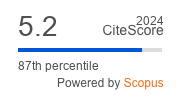Article | Open Access
The New EU Industrial Policy: Opening Up New Frontiers for Financial Capital
| Views: | 2735 | | | Downloads: | 2423 |
Abstract: The EU has implemented a whole array of industrial policy programmes over the past decade to bolster the competitiveness of selected knowledge-intensive industries and to induce a digital and green transition. Responding to shifting competitive challenges in global capitalism, and the adoption of industrial strategies by other major economies, the new EU industrial policy seeks to onshore manufacturing capacity in sectors of geoeconomic importance, and simultaneously reduce dependencies on global value chains. Drawing on a historical materialist perspective, this article historizes and contextualises the financing strategies adopted within EU industrial policy. Faced with tight budgetary constraints, and deficit spending not being an option at the EU level, unlocking private investment takes centre stage, such as by tapping into capital markets or using member state aid or EU structural funds as a precursor, as well as by incentivising private investments through risk-absorbing financial instruments that rely on the EU budgetary resources. As will be shown, the EU has been experimenting with such risk-absorbing financial gimmicks for industrial policy purposes since the 1990s; yet, their usage has reached unprecedented levels with the heightened geoeconomic tensions since the 2008 and Covid-19 crises. The article demonstrates moreover that organised factions within financial and industrial capital have actively advocated for public safeguards, and that their deployment thus is not merely a functionalist response to shifting power dynamics or a desperate last resort in the absence of a supranational fiscal policy.
Keywords: capitalism; European Union; finance; financial capital; industrial policy; risk
Published:
© Angela Wigger. This is an open access article distributed under the terms of the Creative Commons Attribution 4.0 license (http://creativecommons.org/licenses/by/4.0), which permits any use, distribution, and reproduction of the work without further permission provided the original author(s) and source are credited.


